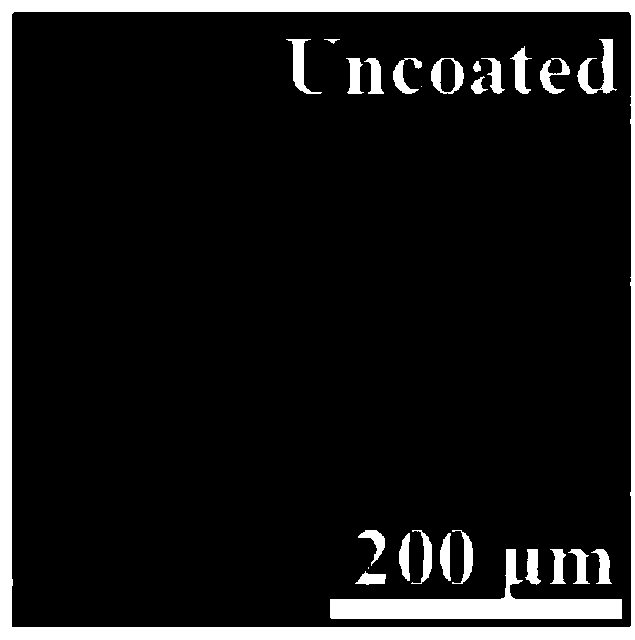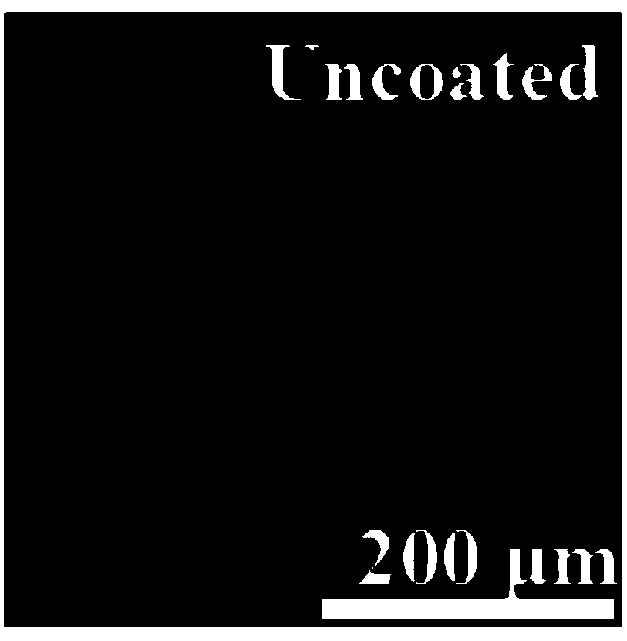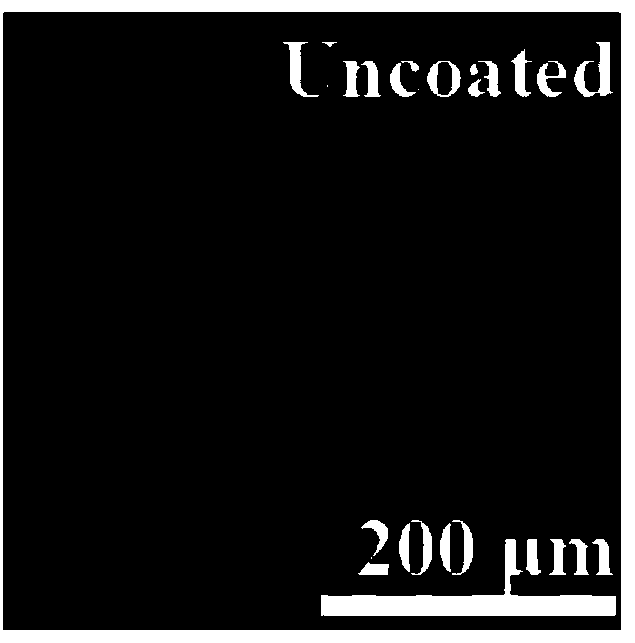Layer-by-layer self-assembly loaded amphiphilic drug microcapsules and preparation method thereof
A technology of microcapsules and parents, which is applied in microcapsules, capsule delivery, pharmaceutical formulations, etc., can solve the problems of difficult-to-handle soft emulsion cores, micellar cytotoxicity, and harsh solvent requirements, and achieve good degradation characteristics and good biological phases. The effect of capacitive and particle size adjustable
- Summary
- Abstract
- Description
- Claims
- Application Information
AI Technical Summary
Problems solved by technology
Method used
Image
Examples
Embodiment 1
[0050] Using stirring co-precipitation method, 5mL 0.33mol / L K 2 CO 3 The aqueous solution was quickly added to 5mL 0.33mol / LCaCl 2 In the aqueous solution, stir vigorously for a certain period of time, and stand at 20°C for 60 minutes.
[0051] Among them, the stirring rate is 2600r / min, the stirring time is 15min, and the 20°C is left standing for 60min, the obtained CaCO 3 Microsphere particle size 1.5-2.5μm, average pore size 30.048nm, specific surface area 7.027m 2 / g, pore volume 0.085cm 3 / g, surface charge +12.6mV.
Embodiment 2
[0053] Weigh 50mg CaCO 3 After the microspheres (prepared in Example 1) were added to 1.5 mL of acetone for ultrasonic dispersion for 10 min, 5 mL of acetone solution in which PLLA (L-PLA) was dissolved was taken and added dropwise to the solution containing CaCO under stirring conditions. 3 In the beaker of the microspheres, seal the beaker, and after adsorbing at 37°C for a certain period of time for 60 minutes, centrifuge at a centrifugal acceleration of 4000×g for 2 minutes, discard the supernatant, and then wash once with acetone (centrifugation for 2 minutes), and the obtained microspheres are immediately mixed with 0.02% PVA aqueous solution (2mL) was mixed by a vortex mixer for 2-3 minutes, centrifuged, the supernatant was discarded, washed with distilled water, and centrifuged twice to obtain CaCO 3 / PLLA microspheres. Dissolve CaCO with 2 mL of 0.1 mol / L HCl solution 3 Centrifuge the inner core at a centrifugal acceleration of 6000×g for 2 minutes, discard the sup...
Embodiment 3
[0058] The CaCO obtained in the previous step 3 / PLLA microspheres (5.14mg) were dispersed in NaCl aqueous solution (5mL) with a concentration of 0.5mol / L and pH=6.5, and the first microsphere dispersion was obtained after ultrasonic dispersion for 10min. A certain concentration of 5mL CHI (chitosan ) solution (2g / L), under stirring condition, add dropwise to CaCO 3 / PLLA microsphere dispersion (first microsphere dispersion), after adsorption at 25°C for 30min, centrifuge at a centrifugal acceleration of 4000×g for 2min, discard the supernatant, and wash with 0.5mol / L, pH=6.5NaCl solution , centrifuged twice. The prepared CaCO 3 / PLLA / CHI microspheres were dispersed in NaCl aqueous solution (5 mL) with a concentration of 0.5 mol / L and pH=6.5 to obtain CaCO 3 / PLLA / CHI microsphere dispersion (second microsphere dispersion), a certain concentration of 5mL CMC (carboxymethyl cellulose, optional sodium salt) solution (2g / L) was added dropwise to CaCO 3 / PLLA / CHI microsphere di...
PUM
| Property | Measurement | Unit |
|---|---|---|
| particle diameter | aaaaa | aaaaa |
| specific surface area | aaaaa | aaaaa |
| pore size | aaaaa | aaaaa |
Abstract
Description
Claims
Application Information
 Login to View More
Login to View More - R&D
- Intellectual Property
- Life Sciences
- Materials
- Tech Scout
- Unparalleled Data Quality
- Higher Quality Content
- 60% Fewer Hallucinations
Browse by: Latest US Patents, China's latest patents, Technical Efficacy Thesaurus, Application Domain, Technology Topic, Popular Technical Reports.
© 2025 PatSnap. All rights reserved.Legal|Privacy policy|Modern Slavery Act Transparency Statement|Sitemap|About US| Contact US: help@patsnap.com



